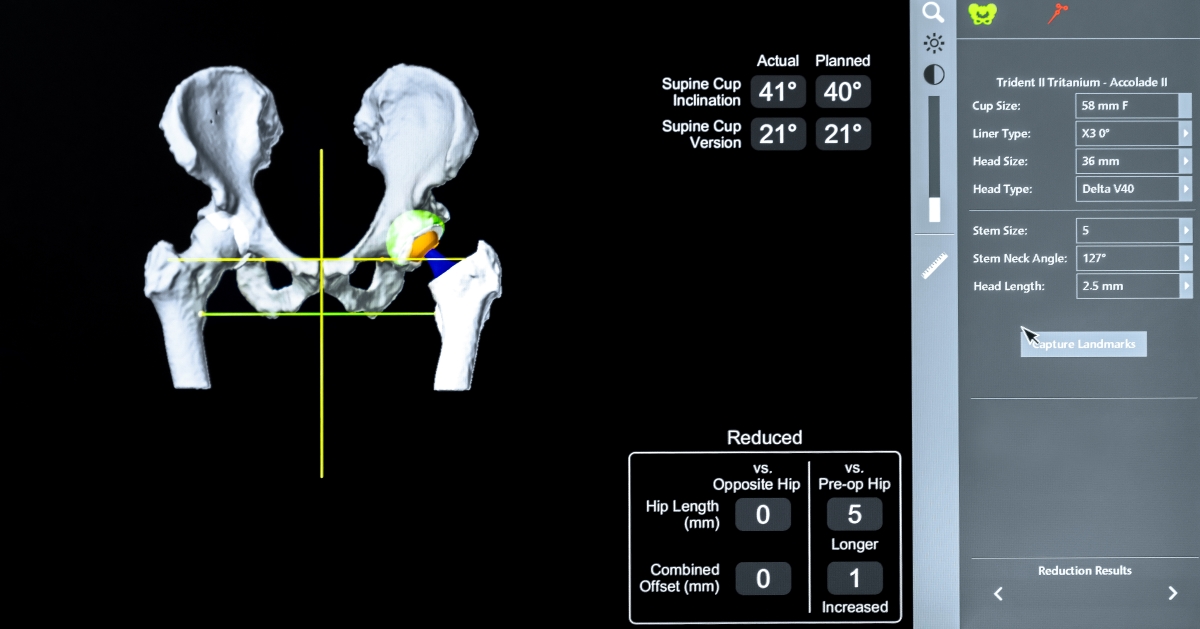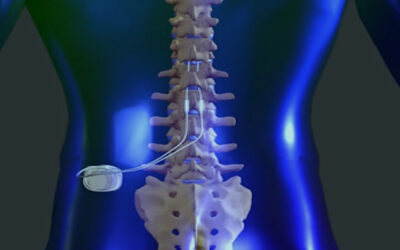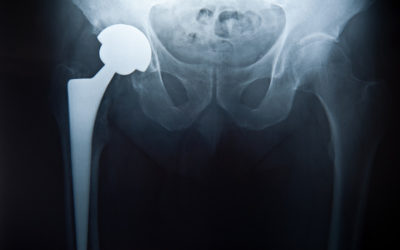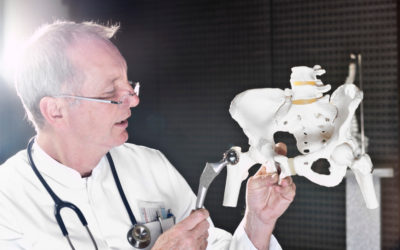We’ve all heard about robotic assistance with surgery, so let’s dive into its benefits to hip replacement surgery. With robotics in hip surgery, the importance of this advanced technology is not only how it helps surgeons during the procedure but patients in their recovery after the procedure as well.
How Robotic-Assisted Hip Replacement Works
The first step in your procedure will be a CT scan of your hip joint that helps create a 3D model of your bones. Then, your surgeon at Midlands Orthopedic will use this detailed 3D source to plan your surgery, and the Mako robotic system will follow this model strictly.
During surgery, the Mako robotic arm follows the programmed sequence from before. Your Midlands Orthopedic surgeon can change the parameters in real-time if needed, which helps the Mako system respond to changes in the operating room as they happen. Based on the surgical plan, the arm can only move within a particular area, which helps keep the procedure from going off track.
Preparing for Robot-Assisted Hip Replacement Surgery
Robot-assisted hip replacement surgery might sound scary, but it can help people with advanced osteoarthritis, and other long-term conditions feel less pain. If you have pain in your hip, your surgeon will discuss the benefits of robot-assisted hip replacement surgery.
Hip replacement surgery is often a good choice for people with severe joint damage from osteoarthritis, a hip fracture, or avascular necrosis. During the procedure, damaged bone and tissue are removed and replaced with a custom-made prosthetic joint with a robotic arm’s assistance to increase precision and success.
The Benefits of Robotics in Hip Replacement Surgery
One of the most successful orthopedic procedures is hip replacement. The accuracy and precision of the surgery are taken to a whole new level when robots are used during this procedure because it increases the success rate. Some more benefits of using robots in hip replacement surgery include the following:
- Patient-specific 3D models – The robotic planning system uses a computer to make a 3D model of the hip joint of each patient. The 3D model lets the surgeon see how the surgery will go and plan it to fit the specific anatomy of each patient
- Better control – The robotic arm helps the surgeon’s hand to be more accurate and steady. The robotic arm makes it easier to cut the femur, ream the acetabulum, and place the implant parts with more accuracy. Robotics can help reduce errors by as much as 94%, which helps reduce the risk of leg length differences, dislocations, and other problems that can happen with traditional hip replacement
- Staying within the “safe zone”- The robot is programmed with the details of the 3D model of the hip. This makes sure that all surgical tools for cutting and drilling stay in the safe zone and ensures that the angle and placement of the implant parts are as close as possible to what was planned
- Minimal damage to healthy surrounding tissue – Because the robotic arm moves so precisely, surgery can be done in tight spaces and through smaller cuts, which does less damage to the surrounding tissues. Using the minimally invasive anterior approach, we can perform the surgery without cutting any of the muscles around the hip
- Improved outcomes – In a large study by the American Hip Institute, 162 people who had a robot-assisted hip replacement were followed for two years to see how they were doing. Robotic hip surgery helped these people, and they were more than twice as likely to feel like their hip was normal than those who underwent the procedure without robotic assistance.
Is Robotic-Assisted Hip Replacement Surgery Better than the Traditional Method?
Robotic hip surgery has many benefits that our patients appreciate, and many choose it over traditional methods. For example, if you’ve tried medicine and physical therapy and still have pain in your hip, robotic hip replacement surgery could help. In addition, people with arthritis or other diseases that weaken the hip over time are good candidates for the procedure, as are people with hip problems caused by an injury.
Robot-assisted total hip replacement can be done on people of any age or body type. This procedure can help any person who is a good candidate for a hip replacement.
Robotics-Assisted Surgery FAQs
Is there less blood loss with robotic-assisted surgery?
When robots are used in surgery, the procedure is more precise and less invasive. This makes it easier to prevent bleeding from possible sources.
What are the risks of robotic-assisted surgery?
There are risks with any major surgery done under general anesthesia, including heart attack and stroke. Therefore, part of the standard surgical evaluation at Midlands Orthopedics is assessing a patient’s health before surgery.
What makes a good candidate for robotic-assisted surgery?
There are many things to consider when deciding whether to operate on a patient. Unfortunately, only some patients are good candidates for robotic surgery or surgery with a small incision. Midlands Orthopedic surgeons work closely with their patients to discuss treatment options and help them choose the best ones. Remember, any patient who is a good candidate for hip replacement surgery can benefit from a robotics-assisted procedure!
Are you considering a hip replacement and curious about our robot-assisted procedures? Here at Midlands Orthopedics & Neurosurgery, our physicians are here to help. Call (803)-256-4107 to schedule an appointment and get started on your pain-free journey. Check out our locations and see which one will best fit your needs!




